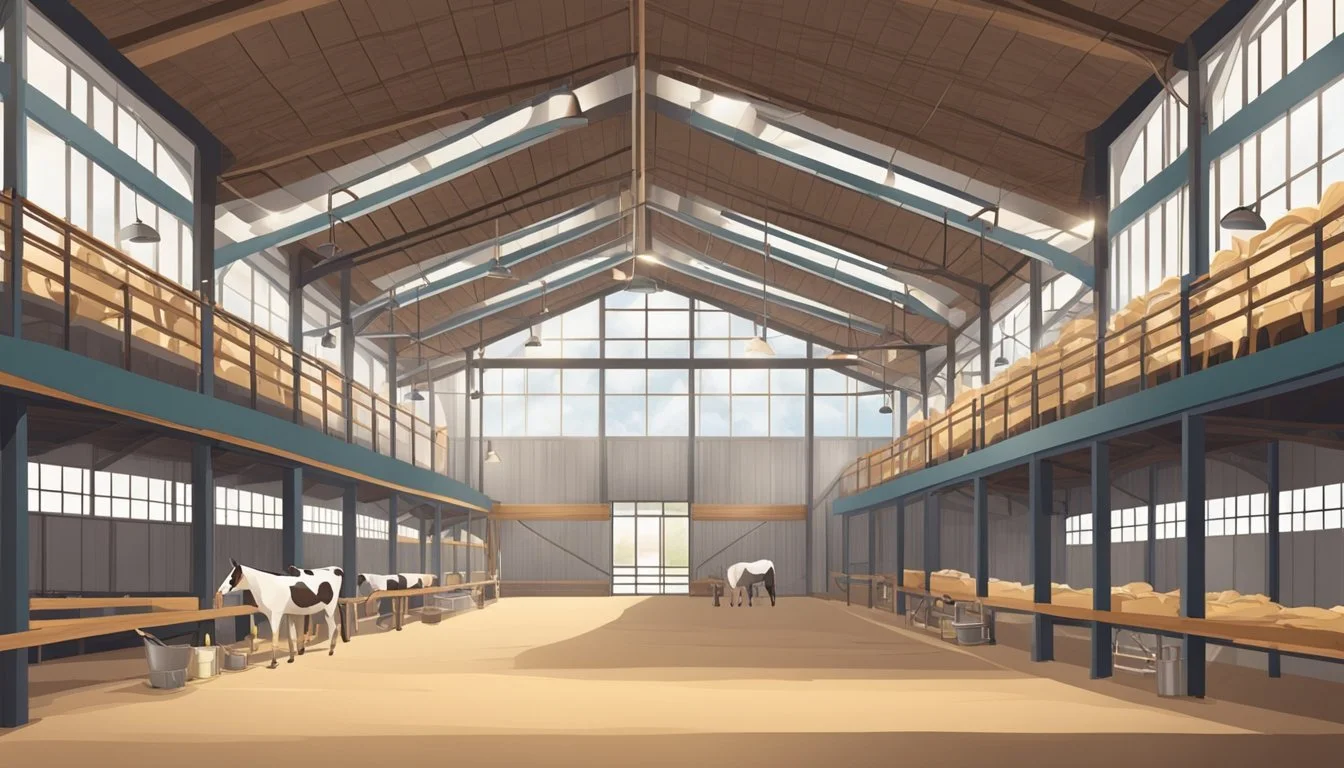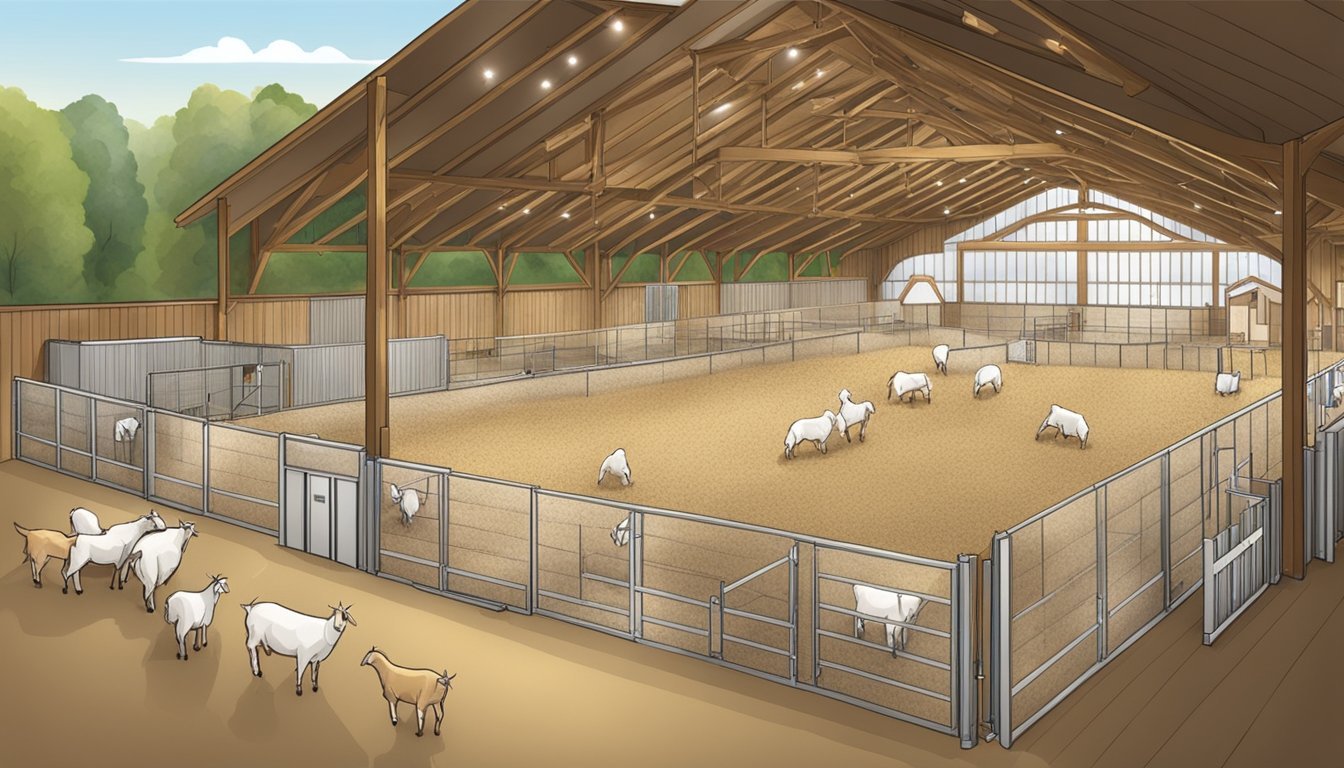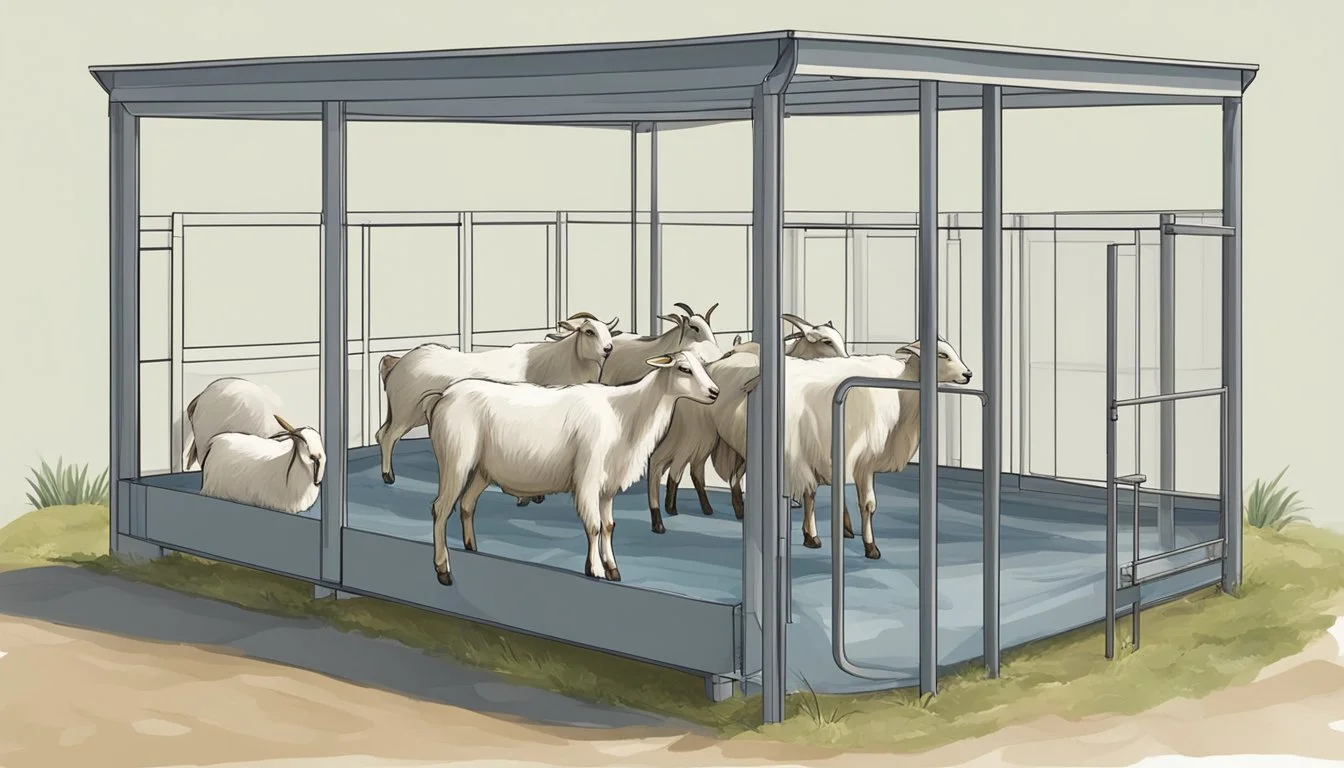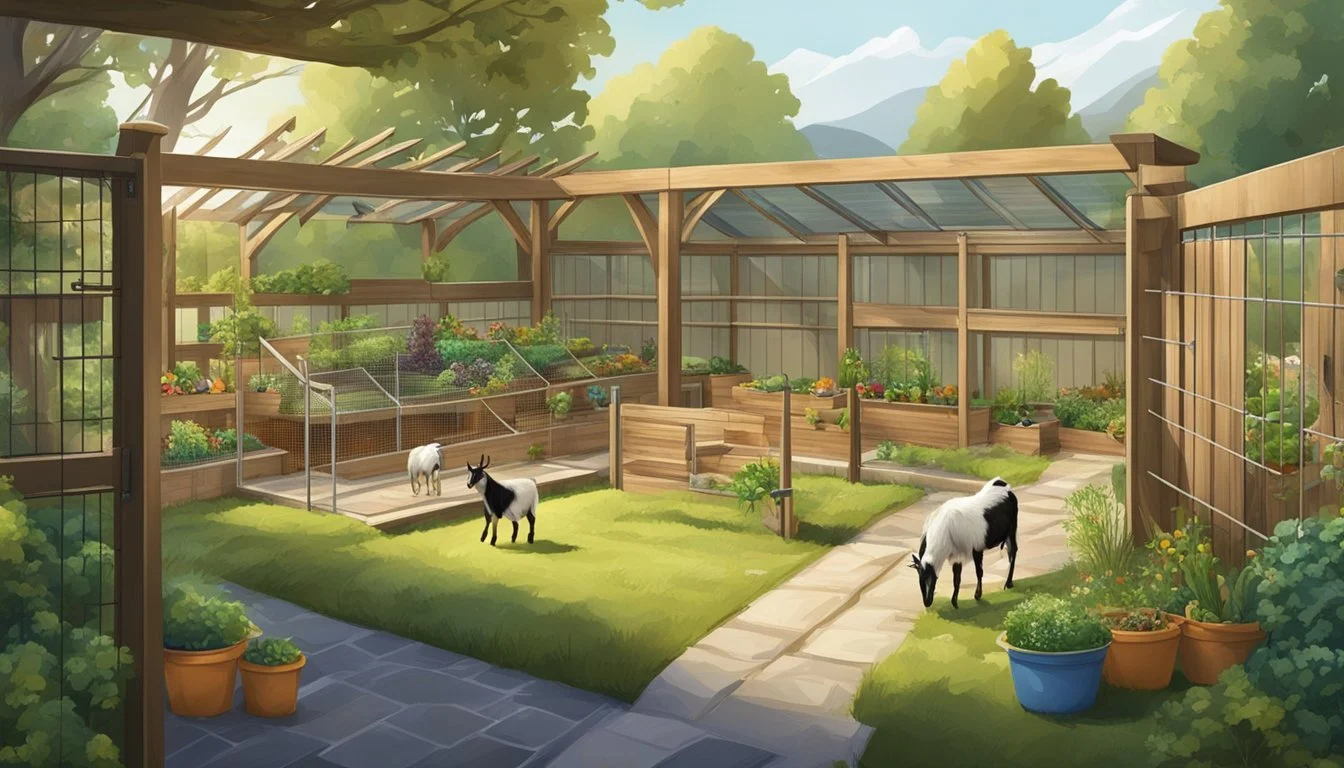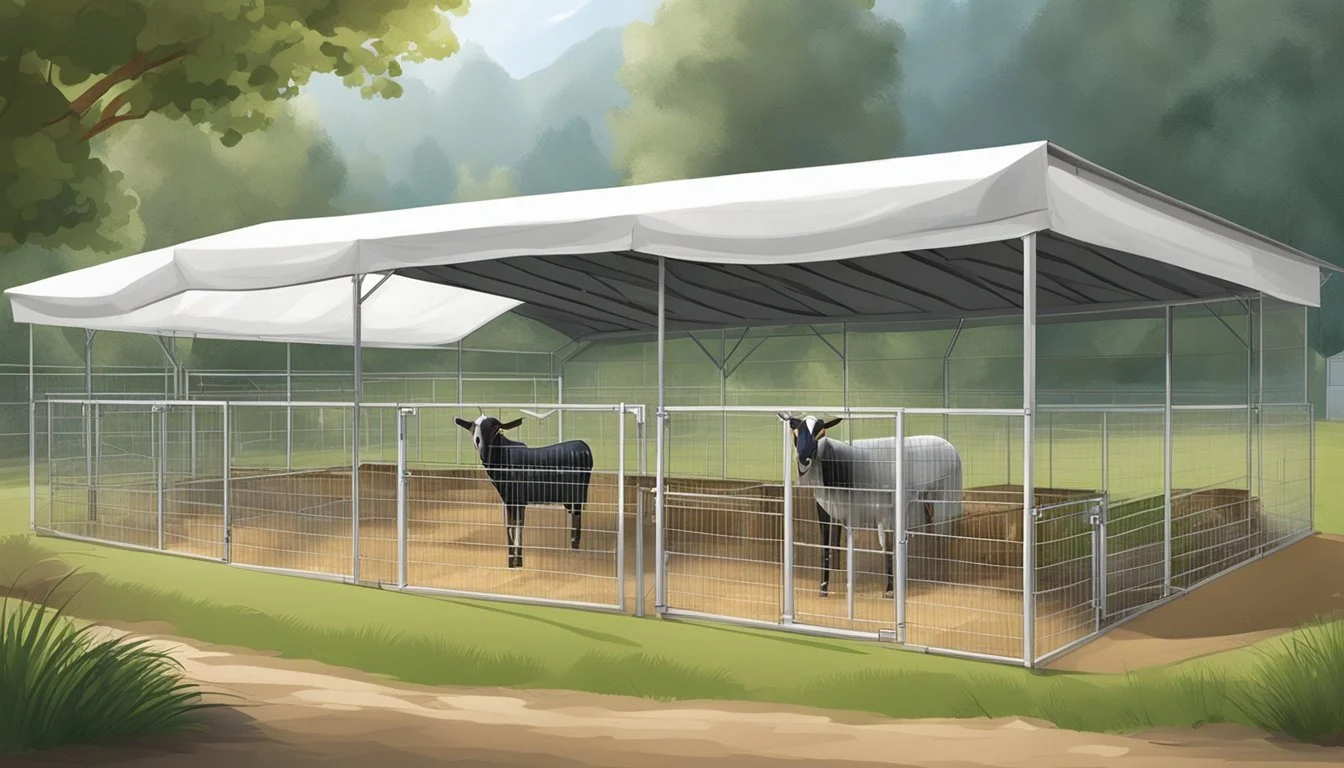Space Requirements for Raising a Family Milking Goat
Essential Guidelines
Raising a family milking goat can be a rewarding endeavor for those seeking to produce fresh milk while enjoying the company of these intelligent and personable animals. Adequate space is not only essential for the health and happiness of goats but also impacts their nutritional intake and milk production. When considering the space necessary for raising goats, attention must be paid to both the sheltered environments where they sleep and the areas where they can roam and graze.
Goats require a clean and dry shelter to protect them from the elements and predators. This space should be well-ventilated and have enough room for each goat to rest comfortably. In addition to their sleeping quarters, goats need an exercise area where they can roam freely. This outdoor space is vital for their physical health and ensures they have access to fresh air and natural vegetation, which is a critical component of their diet.
Providing goats with the right amount of space contributes to their overall well-being, which is reflected in their milk production. A healthy goat is a productive goat, and one's ability to raise goats successfully hinges on an understanding of their needs. Space plays a pivotal role in managing a herd's health, as it influences not only their comfort but also their nutrition, as they often forage on a variety of plants. Observing proper space practices ensures that the goats are content, healthy, and capable of producing quality milk for the family.
Basic Space Requirements
When raising a family milking goat, one must understand that adequate space is as crucial for the animal's well-being as it is for productivity. The space requirements are quantifiable and need to be adhered to for the health and comfort of the goats.
Understanding Space Needs
Raising goats requires a clear grasp of how much space is needed not only for shelter but also for their exercise and overall well-being. Each goat should have enough room to move freely, rest, and engage in natural behaviors. Shelters should be spacious and secure, while an exercise area is vital for their physical health.
Minimum Space Standards
For milking goats, the industry standard suggests a minimum space of 15-20 square feet per goat within the shelter. A proper milking parlor and additional space for feeding and exercise contribute to a healthy dairy goat environment. Goats need access to clean, dry areas, with ample room for continuous movement and growth. It's critical for one to ensure that these space requirements are met to maintain a healthy herd capable of productive milking.
Selecting Goat Breeds
When planning to raise a family milking goat, selecting the right breed is imperative for meeting specific milk production needs and spatial constraints.
Size and Breed Considerations
The size of the goat breed is directly related to the space required for housing and pasture. Smaller breeds like the Nigerian Dwarf goat provide a compact option for limited spaces while still offering high-butterfat milk. On the other hand, larger breeds such as the Saanen require more room but are esteemed for their voluminous milk output. When choosing a breed, one must consider the availability of space relative to the goat's size and the quantity of milk desired.
Popular Dairy Goat Breeds
Several breeds stand out for dairy production, each with its unique characteristics:
Nigerian Dwarf: Small but prolific in milk production, known for high butterfat content, ideal for rich dairy products.
Alpine: Adaptable and good-natured; their milk has a lower butterfat percentage but they often produce more milk overall.
Nubian: Recognizable by long, floppy ears and known for rich-flavored milk with high butterfat; perhaps less prolific than other breeds.
Saanen: One of the largest dairy breeds, valued for large amounts of lower-butterfat milk. They often thrive in cooler climates.
Sable: A variant of the Saanen, Sables are recognized for their ability to produce a substantial quantity of milk and adapt well to various climates.
Toggenburg: The oldest registered dairy goat breed, known for steady milk production and moderate butterfat content.
Each breed offers distinct advantages, and potential goat owners should weigh these considerations carefully to select the breed that best fits their family's needs and their farm's capacity.
Designing Shelter and Bedding Areas
When constructing shelter and bedding areas for a family milking goat, attention to detail is critical for the animals' health and comfort. Factors such as weather protection and bedding management directly impact the wellbeing of the goats.
Protection from Weather
Shelter serves as the first line of defense against varying weather conditions, ensuring goats are safe from rain, cold, and wind. Shelters should be designed to withstand local climate conditions. A sturdy roof and walls that block drafts are essential. Ventilation remains a priority to prevent moisture buildup inside, while overhangs or vestibules can guard entrances against direct rain and snow intrusion.
Roof: A slanted design is ideal for rainwater runoff and prevents the accumulation of snow, which could cause structural damage.
Walls: Materials like wood or concrete blocks can provide excellent insulation against the cold.
Openings: Strategic placement of doors and windows allows for airflow while reducing wind exposure.
Bedding Types and Management
The choice of bedding is crucial for a goat's comfort, health, and the cleanliness of the shelter. Bedding absorbs moisture, reduces smell, and insulates against the cold floor.
Straw: An inexpensive and common bedding that provides good insulation.
Wood Shavings: They have excellent absorbency and are soft, but can be more costly.
Pallets: Raised platforms like pallets can elevate goats off the cold ground, reducing dampness and preserving the quality of bedding materials.
Here's a management tip:
Regularly remove soiled bedding to maintain hygiene and comfort.
Top up with fresh bedding as needed to ensure a dry, insulated surface.
The synergy between a well-designed shelter and effective bedding management results in a stress-free environment for family milking goats, maximized production, and overall herd health.
Creating Outdoor Spaces
When raising a family milking goat, outdoor space is essential for both their physical health and mental well-being. A carefully designed run with secure fencing and managed pasture can provide an optimal environment for grazing and browsing.
Fencing and Security
One must ensure that fencing is both sturdy and high enough to prevent escape. An ideal fence height is at least 4 feet, but breeds known for jumping may require taller barriers. Using woven wire or electric fencing can offer the necessary security. In addition, one should consider incorporating predator deterrents, such as secure locks and possibly guardian animals, to protect the goats from potential threats.
Recommended Fencing Types:
Woven wire
Electric fencing
Security Measures:
Durable locks
Guardian animals (e.g., dogs)
Pasture and Forage Management
Efficient pasture and forage management involves rotational grazing systems to maintain grass health and soil fertility. Divide the pasture into smaller sections, allowing the goats to graze one while the others regenerate. Goats require a varied diet consisting of grass, shrubs, and weeds to fulfill their nutritional needs. By implementing proper forage management, one can reduce feed costs and provide a rich diet to the goats.
Grazing Management:
Rotational grazing
Rest periods for pasture recovery
Forage Variety:
Grasses
Shrubs
Beneficial weeds
Feeding and Watering Considerations
Proper feeding and watering are critical to the health and productivity of dairy goats. Ensuring nutritional needs are met and clean water is available will contribute significantly to the well-being of the family milking goat.
Dietary Needs and Hay Storage
Dairy goats require a well-balanced diet rich in nutrients to support milk production, with a particular emphasis on calcium, selenium, and iron. Feeding should include a mix of concentrated feeds and roughage, such as hay, which is essential for their rumen health and milk quality. Goats should have continuous access to hay, which can also serve as a dietary staple when pasture is not available.
For proper hay storage, it is crucial to keep the hay dry and free from mold and pests. Hay storage areas should also be easily accessible to streamline the feeding process.
Nutritional composition of a goat's diet:
At least 1.5 to 2% of their body weight in roughage
Concentrate ratios adjusted according to milk production levels
Minerals supplements including calcium and selenium
Water Supply and Cleanliness
Clean, fresh water is vital for dairy goats, influencing their overall health and milk yield. Dairy goats require between 4 to 6 gallons of water per day, and lactating does need even more to sustain milk production. It is crucial to provide multiple water sources or automatic waterers to ensure goats have consistent access to water.
Key aspects of water supply:
Buckets or troughs cleaned daily to prevent the buildup of algae and contaminants
Water containers placed in shade to maintain cool temperatures and encourage goats to drink
Water systems must be checked frequently to ensure they are functioning correctly and that the goats always have access to the water they need.
Health, Care, and Cleanliness
Maintaining optimal health and cleanliness for a family milking goat requires diligent care and routine health checks. Proper management is essential to prevent illness and promote overall well-being.
Routine Health Checks
Routine health checks are fundamental to ensure that a goat maintains good health. They should include:
Visual Inspections: Examining the goat daily for any signs of cuts, swelling, or abnormal behavior.
Hoof Care: Trimming hooves every 4 to 6 weeks to prevent foot problems.
Body Condition Scoring: Assessing if the goat is underweight, overweight, or at an ideal weight on a monthly basis.
These checks help in the early identification of potential health issues, allowing for prompt treatment.
Preventing and Identifying Illness
Preventing illness involves a combination of good husbandry practices and vigilance:
Vaccinations: Following a vaccination schedule as recommended by a veterinarian is vital to prevent common infectious diseases.
Parasite Control: Regular deworming, as advised by a registered veterinarian, helps control harmful parasites that can compromise the goat's health.
Cleanliness: Providing clean, dry bedding and a sanitary milking environment reduces the risk of bacteria-related infections.
Detecting illness early is crucial and can involve observing for signs such as reduced appetite, abnormal milk production, or unexpected changes in behavior. Regular visits from a veterinarian can aid in proper illness identification and treatment.
Breeding and Kidding Management
Effective breeding and kidding management are critical components in raising family milking goats. The cycles of heat and breeding, along with the procedures of kidding and newborn care, demand close attention for the health of the doe and her offspring.
Heat and Breeding Cycle
Understanding and monitoring a doe's estrus cycle is vital for successful breeding. The average estrus cycle lasts about 21 days, with does being receptive to breeding for approximately 24-36 hours. Signs of heat in goats can include tail wagging, vocalization, and increased interest from a buck. Accurate timing is essential to achieve conception, and farmers often employ the use of a buck, or male goat, to detect heat and initiate breeding. The gestation period for goats is roughly 150 days, which requires attentive tracking to predict kidding dates and prepare accordingly.
Kidding and Newborn Care
Kidding, the process of giving birth in goats, should be closely monitored. Providing a clean, quiet, and warm environment supports a smooth delivery. After birth, it's imperative that goat kids receive colostrum, the first milk rich in antibodies, within the first few hours to ensure a healthy start.
Immediate Care Checklist:
Dry the newborn goat kid to prevent chilling.
Ensure the kid receives colostrum within the first 2 hours.
Monitor the kid for signs of butterfat content sufficiency and overall health.
Subsequent care includes proper feeding of the doe to support milk production, which should match the goat kids' growth needs and butterfat content. In the weeks following birth, attention should be given to the kids' development, diet, and eventual weaning based on their growth and health status.
Dairy Production and Processing
In the context of raising a family milking goat, dairy production refers to the yield and quality of the milk obtained, while processing involves transforming raw milk into various dairy products such as cheese, butter, yogurt, and even non-edible items like soap.
Milk Yield and Quality
When it comes to milk production, the average daily output for a family milking goat is approximately 2 to 3 quarts. The key factors affecting milk yield and quality include the goat's breed, health, diet, and stage of lactation. For instance, a healthy goat provided with balanced nutrition is more likely to produce milk with a high butterfat content, which is desirable for making richer dairy products. It is crucial to ensure that the milk is rapidly cooled to preserve its freshness and flavor.
Processing Milk into Dairy Products
Processing milk into dairy products involves several steps to ensure safety and quality. Here’s a brief overview:
Pasteurization: This critical step involves heating milk to a specific temperature to kill harmful bacteria without changing the milk's nutritional value or flavor.
Cheese Making: This process begins with curdling the milk, cutting the curd, and pressing it to form cheese; the specifics vary depending on the type of cheese desired.
Culturing for Yogurt: Culturing involves adding specific bacteria to the milk and incubating it at a warm temperature to create thick and tangy yogurt.
Churning for Butter: For butter production, the cream is separated from the goat milk and churned until it solidifies.
Soap Production: The fats in goat milk can be combined with lye through a saponification process to create moisturizing soap.
By overseeing each step meticulously in conditions ranging from home kitchens to on-farm processing facilities, producers can turn their goat milk into an array of products suited for both consumption and skin care.
Additional Considerations for Raising Goats
When setting up a space for raising goats, one must consider the fluctuating needs depending on herd size and must ensure that essential utilities and functional areas are in place for efficient operation.
Space Adjustments for Herd Sizes
For those managing a backyard homestead or a larger goat farm, space must be scaled appropriately with the size of the herd. An individual milking goat requires between 10 to 20 square feet of shelter—10 if they have a large pasture, and 20 if less. In the context of herd animals, communal areas need scaling too; a minimum of 200 square feet of outdoor space per goat is essential to prevent overcrowding and promote good health.
Utilities and Functional Areas
Having the right utilities can significantly reduce labor required on a farm. Critical utilities include a clean water supply and electricity for lighting and operating equipment. Functional areas are also a must. A dedicated milking stand in a separate, easily cleanable space such as a stall with concrete flooring is recommended for sanitary milk goats handling. Providing free-choice minerals in a designated feeding area supports the health and production of the goats.


